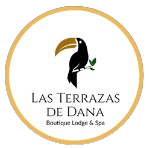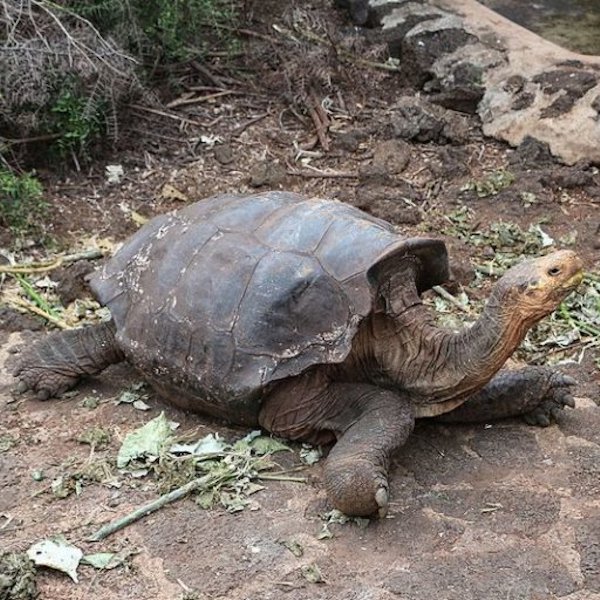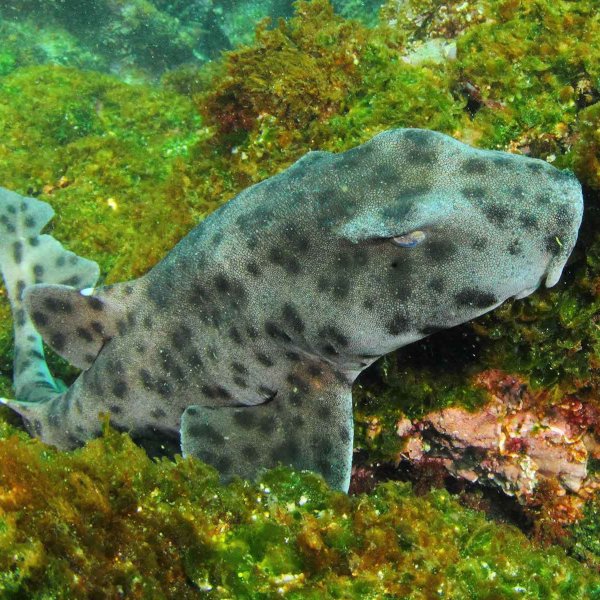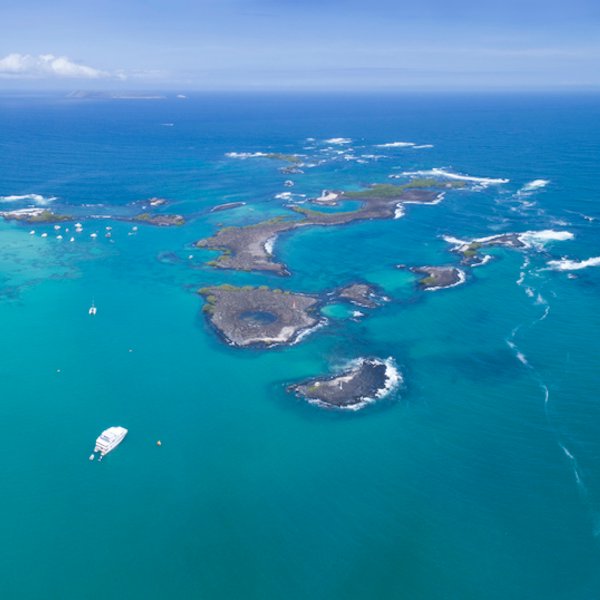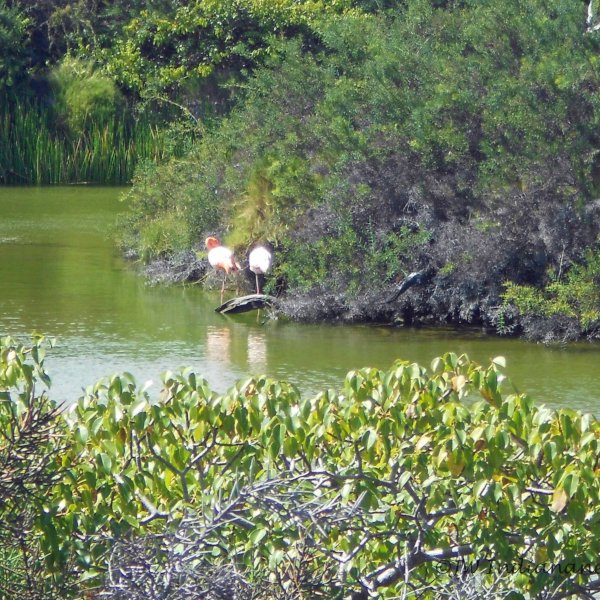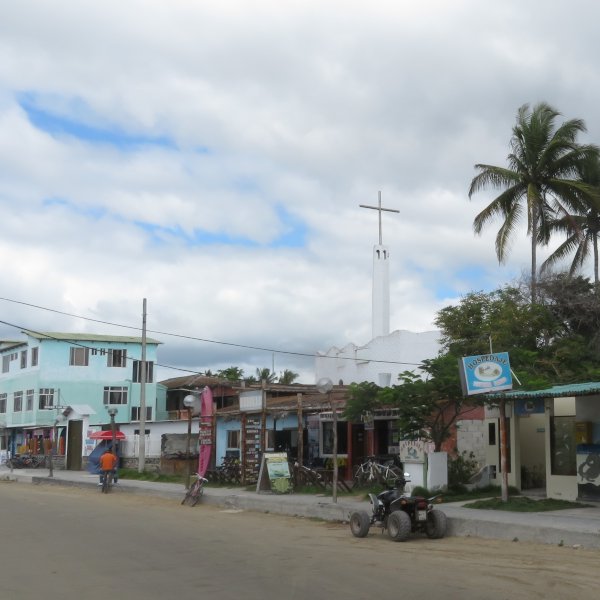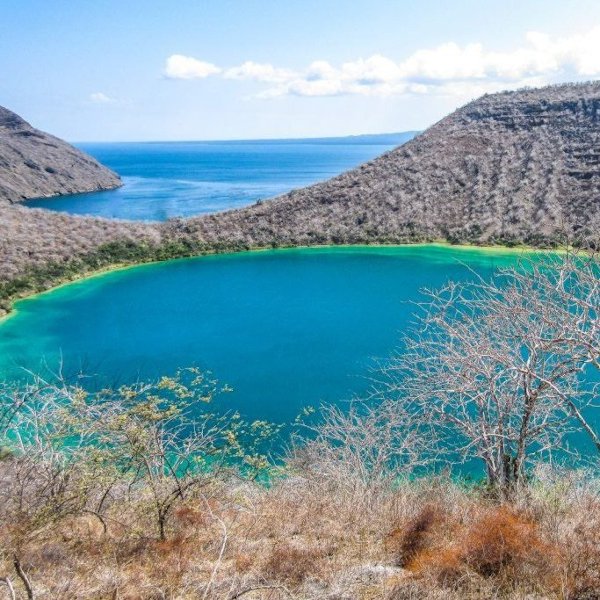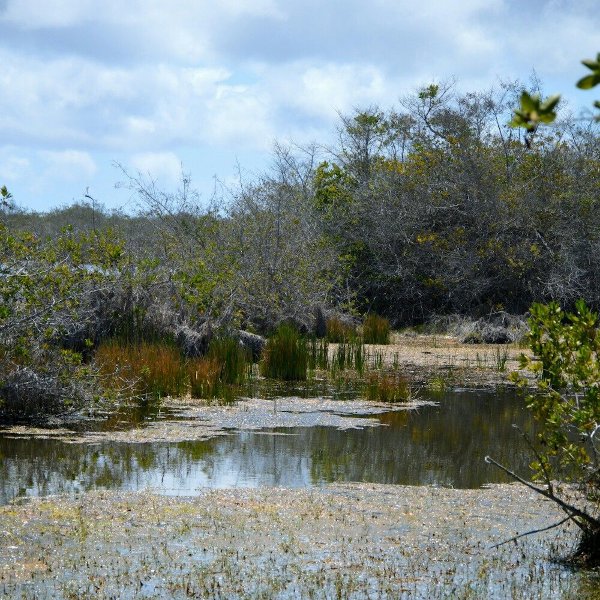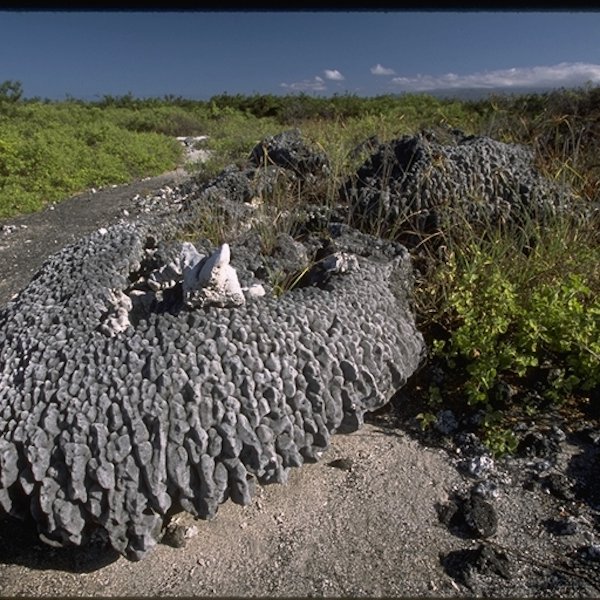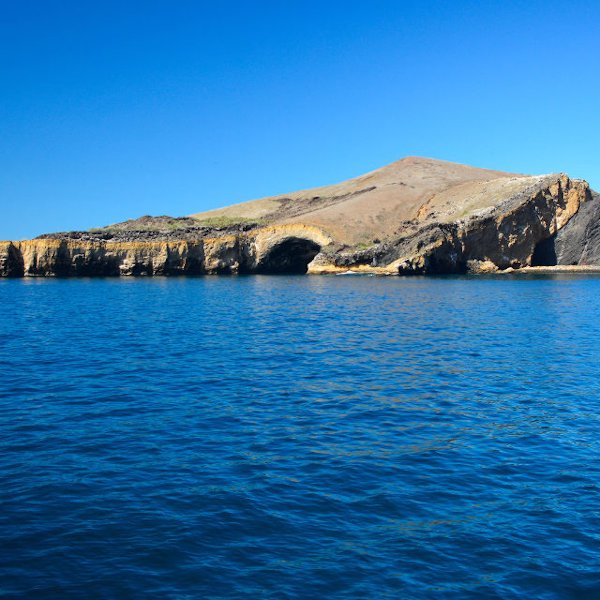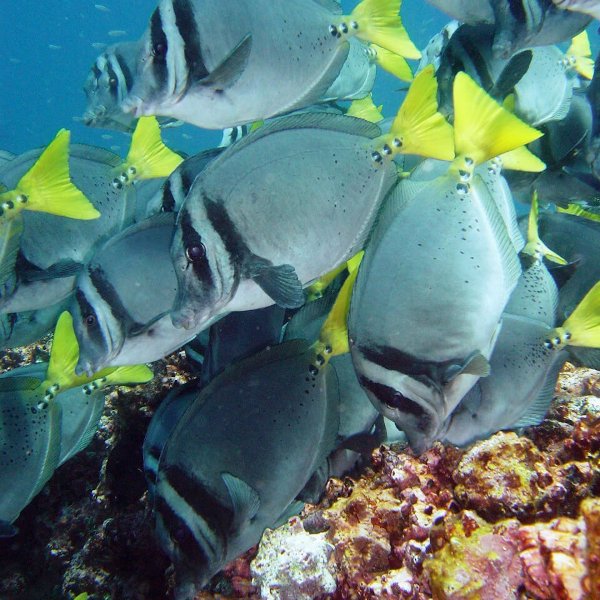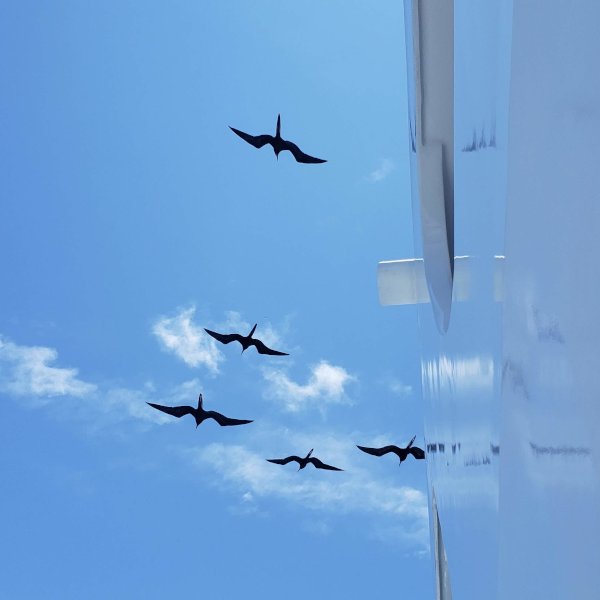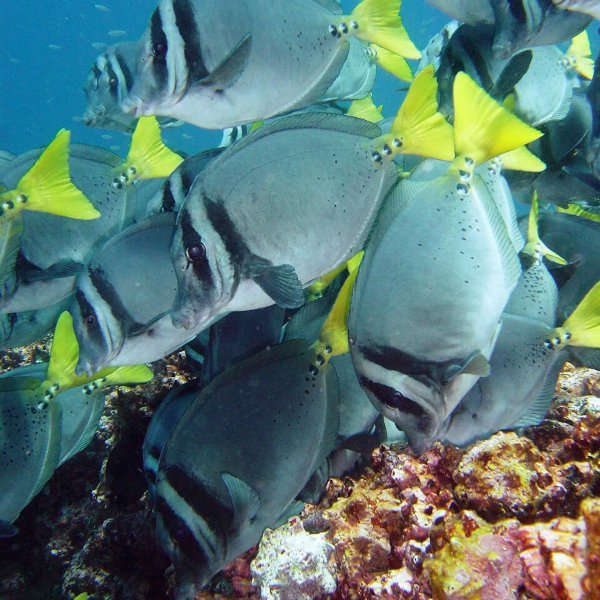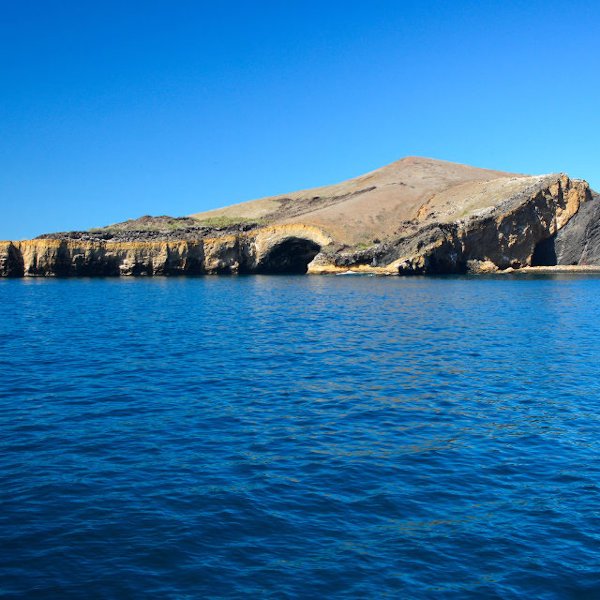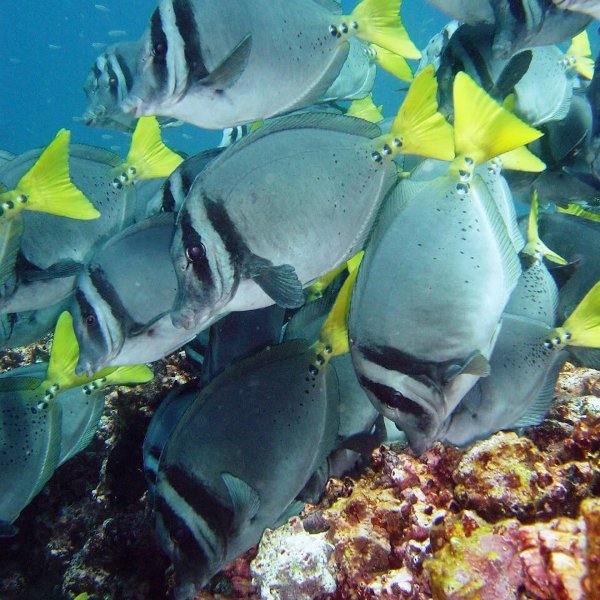Isabela
Albemarle Point, located in the northern part of Isabela, is the highest point on the island, and you can see on your tour here the ruins of a radar base on the shore, from World War II. This site is one of the most pristine spots within the Galapagos National Park, offering you the opportunity to see flightless cormorants, that have a nesting site here and the largest specimens of marine iguanas in the archipelago. You will also be able to see Pahoehoe lava flows, naturally solidified lava in a wavy form.
The most magnificent views on the island can be seen from the volcano Sierra Negra, featuring the largest crater in the archipelago, and there is evidence of the most recent volcanic activity in 2005 on the northern side. The vegetation here is very rich and you can spot up to seven species of finches.
Flamingos Lake can be found west of Puerto Villamil and, besides the variety of sea birds you can see here, the lake is home to the largest population of flamingos in Galapagos.
Concha de Perla near Puerto Villamil is an incredible marine site accessible by way of a wooden footpath. The waters of the bay are calm and clear, making it a great spot for swimming and snorkeling, one of the few places in Galapagos where you can explore the underwater world without a guide. Among the variety of marine wildlife present, you can see here tropical fish, turtles, sea lions and penguins.
Located on the east coast of Isabela Island, Elizabeth Bay is an amazing point you can visit from you cruise ship, made of the bay itself plus several small islands. A great site for snorkeling, you can encounter penguins, sea lions, sharks and even whales. Near Elizabeth Bay, on the west side of Isabela, there is Moreno Point or Punta Morena. This is a great site on your birdwatching tour, you can actually go for a panga ride along the impressive shores and observe brown pelicans, flamingos and herons. You can also see Galapagos Penguins and if you go on land, there is a path going through lava rocks that reaches tide pools where you can often see white-tip sharks and green sea turtles.
The Arnaldo Tupiza Breeding Center or the Interpretation Center is near Puerto Villamil, and its purpose is that of preserving the Giant Tortoise species existing on the island and increasing their population. You can observe here hatcheries where eggs are being nursed and corrals where the adults are supervised.
The island's volcanic areas are made of lava fields, with sparse vegetation, while the highlands in the southern part are rich in vegetation, especially the remarkable red mangrove.
The Wall of Tears is a historical landmark on Isabela Island. It is a 65 feet wall built between 1945 and 1959 by prisoners from a penal colony. Thousands of them died during the construction and some say you can still hear their cries.
- Isabela Island is formed by 5 joined volcanoes, still active today.
- The remains of a World War II radar base can still be seen on the island.
- Built by prisoners around the 1950s, the Wall of Tears is an impressive historical site.
Blue-Footed Booby, Brown Pelican, Darwin’s Finches, Flightless Cormorant, Galapagos Dove, Galapagos Frigatebirds, Galapagos Fur Seal, Galapagos Giant Tortoise, Galapagos Green Turtle, Galapagos Hawk, Galapagos Hoary Bat, Galapagos Land Iguana, Galapagos Lava Heron, Galapagos Lava Lizard, Galapagos Marine Iguana, Galapagos Martin, Galapagos Mockingbird, Galapagos Penguin, Galapagos Petrel, Galapagos Rail, Galapagos Red Bat, Galapagos Sea Lion, Galapagos Sea Robin, Galapagos Sharks, Galapagos Shearwater, Galapagos Short-eared Owl, Galapagos Sting Rays, Great Blue Heron, Greater Flamingo, Mobula Rays, Nazca Booby, Red-lipped Batfish, Sunfish, Vermilion Flycatcher, Whales & Dolphins, White-cheeked Pintail, Yellow-crowned Night Heron

